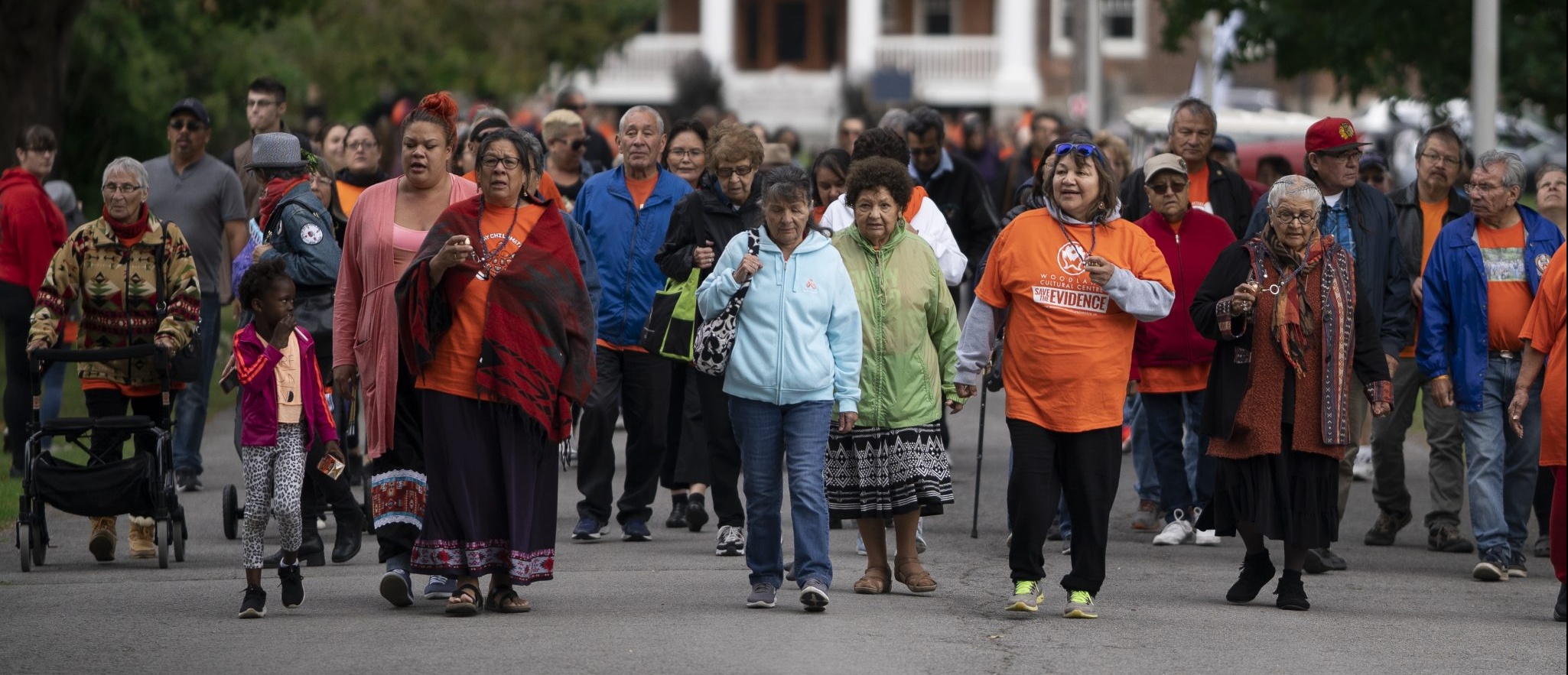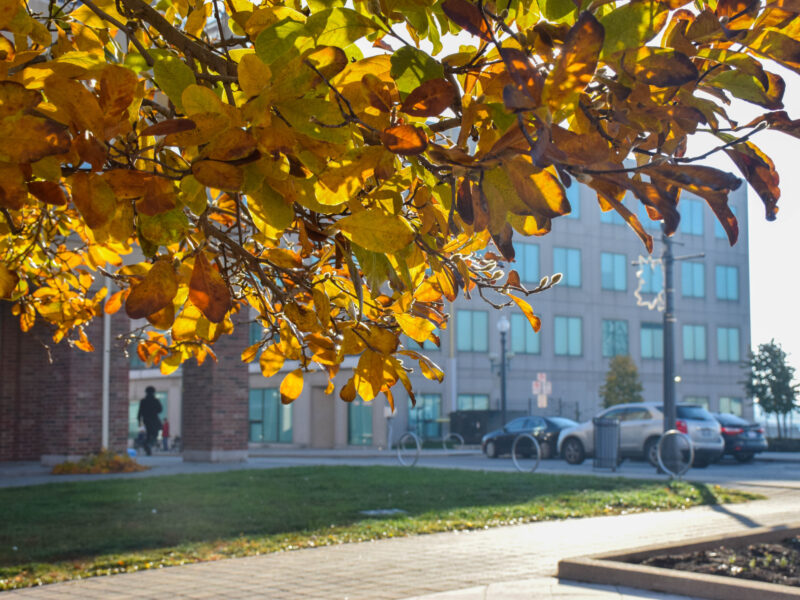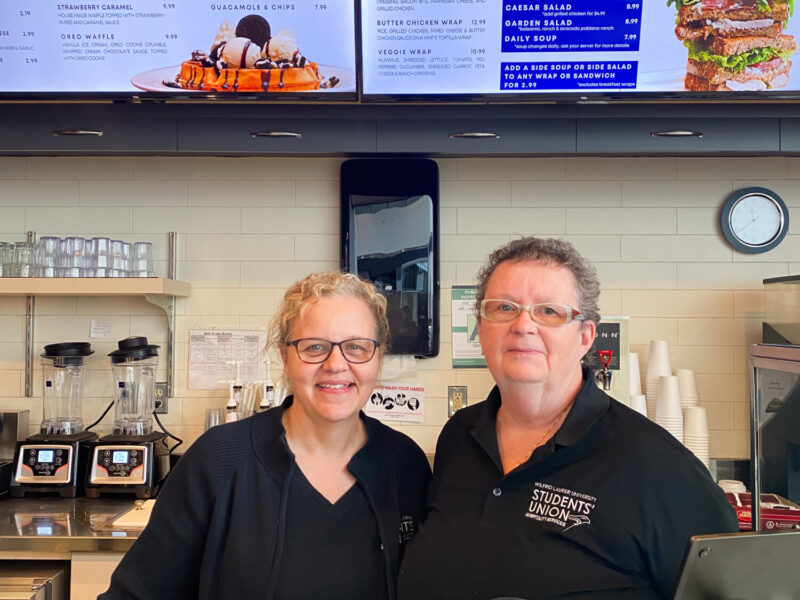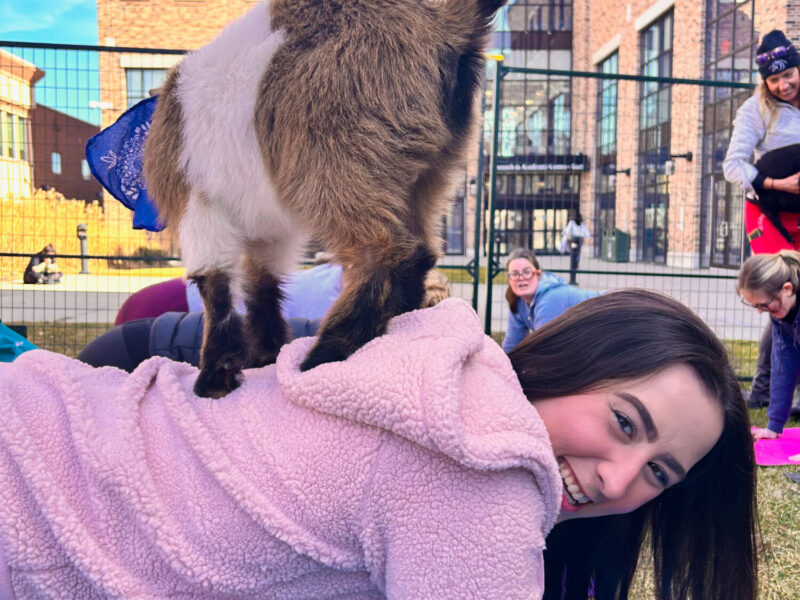Attempting to find reconciliation in one of Canada’s darkest periods of its history has, in the past few decades, been a difficult and complex process of acknowledgement, confrontation and healing for Indigenous Canadians — especially those who have been most impacted by it.
On Sunday, Sept. 29, to honour the trauma faced by Indigenous people during the period of residential school operation in Canada, Brantford residents took part in a healing walk to the former Mohawk Institute, one of Canada’s oldest, still-standing residential schools in the country, to visit a site of Indigenous oppression.
The former Mohawk Institute, which was operational from 1885 to 1970, saw the forcible enrollment of many thousands of Indigenous youth — approximately 90 to 200 per year — most of whom would have been separated from their families and culture and made to involuntarily assimilate to a more anglicized culture.
The “Survivors Gathering” walk, facilitated by the Woodland Cultural Centre in Brantford, has been organized annually for the last three years, and falls on the weekend of Orange Shirt Day, the national event that began in 2013.
“Orange Shirt Day is a national awareness campaign for survivors of residential schools, and we all wear orange to honour those that survived and the many children who did not,” said Layla Black, marketing coordinator for the Woodland Cultural Centre in Brantford, in an email statement.
“It’s important that we all understand the depth of the trauma, that we listen and truly hear their stories, and it creates that recognition of the Indigenous culture this country was built on.”
Orange Shirt Day is a national awareness campaign for survivors of residential schools, and we all wear orange to honour those that survived and the many children who did not.
– Layla Black, marketing coordinator for the Woodland Cultural Centre in Brantford
The history of residential schools and their long-lasting impact on Indigenous cultures throughout Canada have been very tough for the country to grapple with.
Similar to the internment of Japanese Canadians during the Second World War, there are a number of infamous examples of under-discussed aspects of Canadian history that have only recently been properly acknowledged by Canada’s federal government and educational system.
“If we don’t have an acknowledgement, the stories will never be heard, and this history will be forgotten. It’s not an easy thing to talk about or even think about, that the founders of this country were so cruel and violent to Indigenous children,” Black said in the statement.
“Admitting that it was an attempt at genocide is not an easy pill to swallow, but the truth has to be told so that Canadians can learn from past mistakes, grow in understanding, and build a stronger foundation and partnership with Indigenous people of Canada.”
But despite this acknowledgement, there is still a long process of healing and reconciliation involved. Included in that process is the efforts of organizations like the Woodland Cultural Centre, which seek to preserve the former Mohawk Institute for educational purposes.
“[Our goal is to take] a place that for 150 years was designated to eradicate the identity of Indigenous people, and [transform it into] … a hub for showcasing, promoting, teaching and preserving,” Black said in the statement.
Participation in the process of acknowledgement and reconciliation for Canadians, and those who wish to be effective allies, is a complicated process, especially given that a lot of these events precede many of us. The question of “how can I help?” can be a difficult one to navigate.
However, Black offers a simple suggestion to combat this problem.
“In my opinion, one of the first things you must do is listen. Listen to the stories,” Black said in the statement.
“This not only helps you [better understand] the depth of trauma and intergeneration[al] trauma, but also is healing for survivors to speak about their experience. Many have lived in silence with it for most of their lives.”
It is easy to fall back into the stereotypes of Indigenous people that most of us are familiar with, [but] when you start to truly learn and acknowledge the trauma that was forced upon them, you start to understand WHY there are so many social issues.
– Layla Black, marketing coordinator for the Woodland Cultural Centre in Brantford
Approaching that dialogue, for some, can be equally as difficult as acknowledging the traumatic circumstances surrounding events like Orange Shirt Day.
“It is easy to fall back into the stereotypes of Indigenous people that most of us are familiar with, [but] when you start to truly learn and acknowledge the trauma that was forced upon them, you start to understand WHY there are so many social issues,” Black said in the statement.
“It’s not an easy conversation to have, and can be difficult to speak about and also to hear … [what the Woodland Centre does is provide] a place where you can truly learn and listen to the experiences and genuinely take a sense of what happened and the impacts away with you into the world.”
For those who have been personally impacted by the effects of residential schools, including survivors and their families, the Woodland Cultural Centre offers their support in finding the proper resources that are needed, including their active role in the education and awareness surrounding Orange Shirt Day.
“Before solutions can be initiated the most important step is listening … educate yourself,” Black said in the statement
“The generational trauma of hundreds of years of these operational schools has affected many, and is still holding a grip on many Indigenous people and communities. The more education and awareness we can create around this, the more we can make an impact for change.”
*Photography courtesy of Ian Maracle, Freelance Media Creator*




